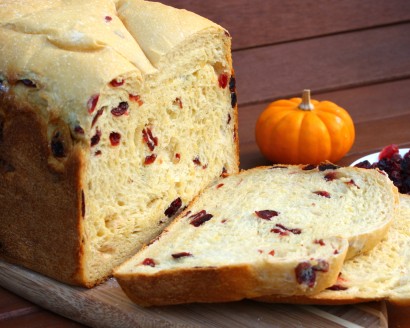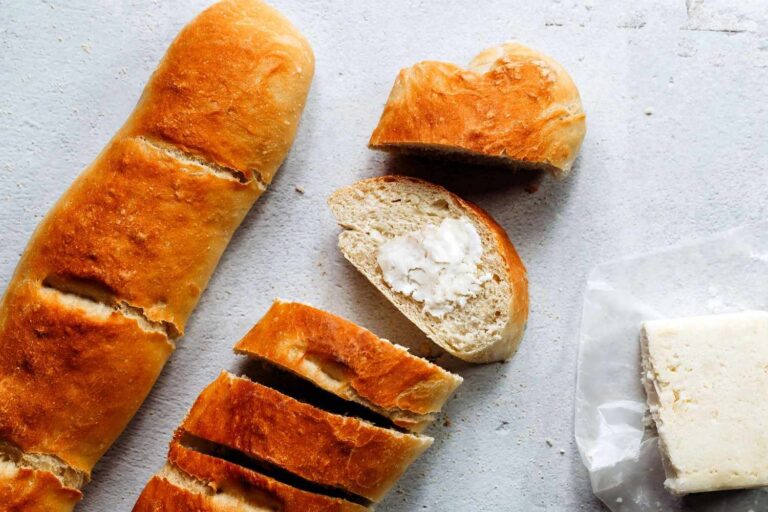Biko Ube Recipe: A Delicious Twist On A Classic Dessert
Looking for a delicious and unique dessert to impress your guests or satisfy your own sweet tooth? Look no further! We have the perfect recipe for you – biko ube! This mouthwatering Filipino delicacy combines the rich flavors of sticky rice and purple yam, resulting in a delightful treat that will leave you craving for more. In this article, we’ll guide you through the simple steps of mastering this delectable dessert. So, let’s dive right in and indulge in the irresistible goodness of biko ube!
Biko Ube Recipe: A Delicious Twist on a Classic Filipino Dessert
Are you a fan of Filipino desserts? If so, you’re in for a delightful treat with our biko ube recipe. Biko is a traditional Filipino rice cake made with glutinous rice, coconut milk, and brown sugar. Ube, on the other hand, is a vibrant purple yam known for its distinct flavor and hue. By combining these two beloved ingredients, we’ve created a dessert that’s not only visually appealing but also incredibly delicious. In this article, we’ll guide you through the process of making biko ube step by step, allowing you to enjoy this mouthwatering treat in the comfort of your own home.
Ingredients
Before we dive into the recipe, let’s take a look at the ingredients you’ll need to make biko ube:
- 2 cups glutinous rice
- 2 cups coconut milk
- 1 ½ cups ube halaya (purple yam jam)
- 1 ½ cups brown sugar
- 1 teaspoon vanilla extract
- 1 cup water
- Pinch of salt
Make sure to gather all the ingredients before you begin. You can find ube halaya, also known as ube jam, in Asian grocery stores or online. Now that you have everything you need, let’s get started!
Step 1: Soaking the Rice
The first step in making biko ube is to soak the glutinous rice. Place the rice in a large bowl and cover it with water. Let it soak for at least 4 hours or overnight. This will ensure that the rice cooks evenly and achieves the perfect texture.
Pro tip:
For best results, use glutinous rice specifically labeled as “sweet rice” or “sticky rice.” This variety of rice has a higher starch content, giving the biko its signature chewy texture.
Step 2: Cooking the Rice
Once the rice has soaked, drain the water and transfer the rice to a steamer. Steam the rice for about 25-30 minutes, or until it becomes soft and fully cooked. You can also use a rice cooker if you prefer.
Pro tip:
If you don’t have a steamer or rice cooker, you can still cook the rice on the stovetop. Simply place the soaked rice in a large pot, add enough water to cover the rice, and bring it to a boil. Reduce the heat to low, cover the pot, and let the rice simmer for about 20-25 minutes.
Step 3: Preparing the Coconut Sauce
While the rice is cooking, it’s time to prepare the coconut sauce that will be poured over the biko. In a separate saucepan, combine the coconut milk, brown sugar, vanilla extract, and a pinch of salt. Heat the mixture over medium heat, stirring continuously until the sugar has dissolved and the sauce has thickened slightly.
Pro tip:
For an extra layer of flavor, you can also add pandan leaves to the coconut sauce while it simmers. Pandan leaves are commonly used in Asian cooking and have a delightful fragrance that pairs well with coconut.
Step 4: Mixing the Rice and Ube
Once the rice is cooked and the coconut sauce is ready, it’s time to combine them with the ube halaya. In a large mixing bowl, gently fold the cooked rice and ube halaya together until well incorporated. Be careful not to mash the rice; you want to maintain its distinct grains for texture.
Pro tip:
If you prefer a stronger ube flavor, you can add more ube halaya to the mixture. Adjust the amount to suit your personal taste.
Step 5: Assembling and Baking
Next, preheat your oven to 350°F (175°C). Grease a baking dish or line it with parchment paper to prevent sticking. Transfer the rice and ube mixture into the prepared baking dish, spreading it evenly with a spatula.
Pour the coconut sauce over the rice mixture, ensuring that it covers the entire surface. The sauce will add moisture and flavor to the biko, enhancing its overall taste.
Place the baking dish in the preheated oven and bake for approximately 25-30 minutes, or until the top turns golden brown. Keep an eye on it as baking times may vary depending on your oven.
Serving and Enjoying Biko Ube
Once the biko ube is baked to perfection, remove it from the oven and let it cool for a few minutes. Cut it into squares or diamond shapes and serve it warm or at room temperature.
Biko ube is a versatile dessert that can be enjoyed on its own or paired with other treats. Here are a few serving suggestions:
- Sprinkle toasted coconut flakes on top for added texture.
- Drizzle condensed milk or caramel sauce for extra sweetness.
- Pair it with a scoop of vanilla ice cream for a delightful contrast.
No matter how you choose to serve it, biko ube is guaranteed to be a hit among family and friends. Its unique combination of flavors and textures will leave everyone craving for more.
There you have it, a step-by-step guide to making biko ube, a delicious twist on the classic Filipino dessert. With its vibrant color and irresistible taste, biko ube is sure to become a favorite among dessert lovers. Whether you’re celebrating a special occasion or simply looking to satisfy your sweet tooth, this dessert is a fantastic choice. Give our biko ube recipe a try and enjoy the fusion of flavors that will transport you to the heart of the Philippines.
How to Make Biko Ube | Pinoy Kakanin
Frequently Asked Questions
Can I use regular glutinous rice instead of ube glutinous rice for biko ube?
Yes, you can use regular glutinous rice instead of ube glutinous rice for biko ube. However, keep in mind that using ube glutinous rice will give your biko a distinct purple color and a subtle ube flavor. If you opt to use regular glutinous rice, your biko will have a more traditional appearance and flavor.
Can I substitute ube powder for fresh ube in biko ube recipe?
Yes, you can substitute ube powder for fresh ube in a biko ube recipe. Simply follow the instructions on the packaging of the ube powder to reconstitute it. Keep in mind that using fresh ube may result in a more vibrant ube flavor and color, but using ube powder is a convenient alternative.
How do I store biko ube?
To store biko ube, allow it to cool completely and transfer it to an airtight container. You can keep it at room temperature for up to 2 days. If you want to store it for a longer period, place it in the refrigerator. Properly stored biko ube can last for about 5-7 days in the refrigerator. Before serving, you can reheat it in the microwave or steam it.
Can I freeze biko ube?
Yes, you can freeze biko ube. Once it has cooled completely, wrap it tightly with plastic wrap or place it in a freezer-safe container. It can be stored in the freezer for up to 3 months. When you are ready to enjoy it, thaw it overnight in the refrigerator and reheat it before serving.
Final Thoughts
In conclusion, the biko ube recipe is a delicious and unique dessert that combines the rich flavors of sticky rice and purple yam. The recipe is simple and easy to follow, making it accessible to both experienced and novice home cooks. By incorporating traditional Filipino ingredients and techniques, this dessert brings a taste of Filipino culture to any dining table. Whether it’s for a special occasion or simply a sweet treat, biko ube is a delightful dessert that will surely satisfy any sweet tooth. So why not give this biko ube recipe a try and indulge in this delightful Filipino dessert?





